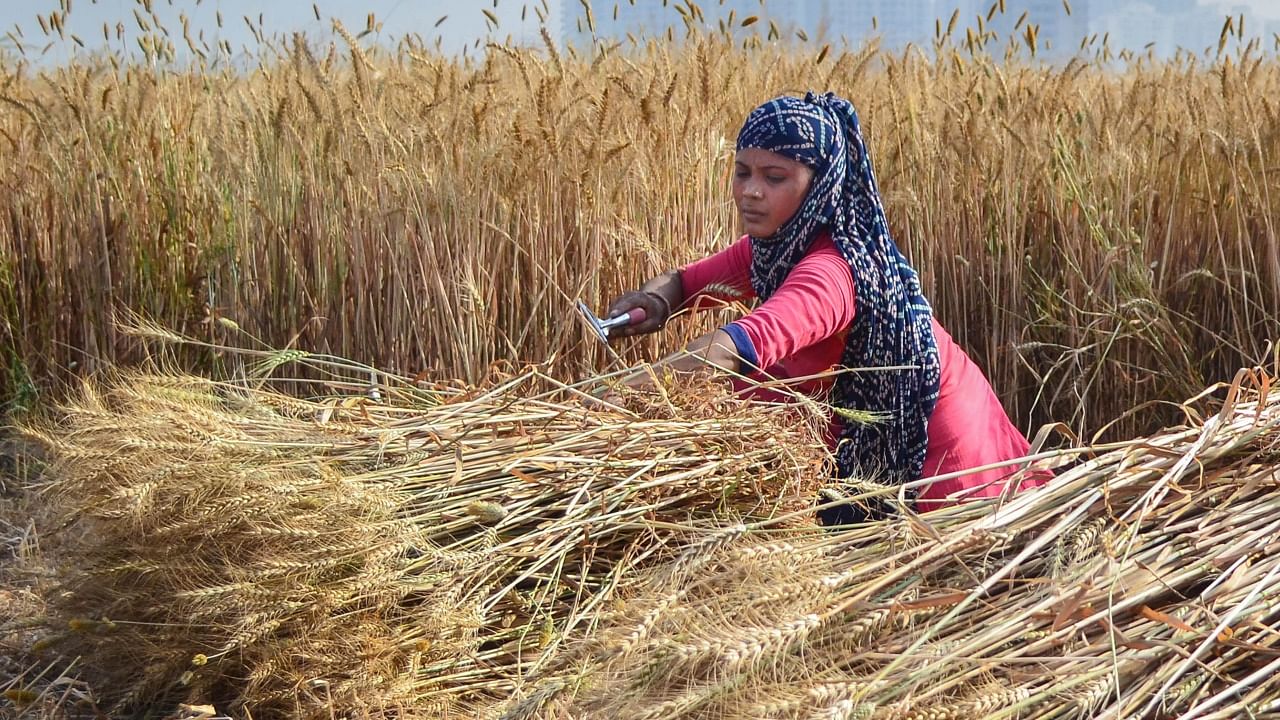
The government on Tuesday asserted that there will not be any fertiliser shortage in the upcoming kharif sowing season and said it will soon announce the subsidy rate for non-urea soil nutrients for the current fiscal.
Addressing a conference on preparedness for the kharif sowing operation that commences with the onset of the southwest monsoon from June, Fertiliser Secretary RK Chaturvedi highlighted the steps taken by the government to ensure sufficient availability of fertilisers at an affordable price to the farmers.
"We have made both short and long term arrangements with global suppliers for import of fertilisers. There will not be any shortage of fertilisers during the kharif season," he said.
As against the total estimated fertiliser requirement of 354.34 lakh tonne during the 2022 kharif season, availability would be 485.59 lakh tonne, including 104.72 lakh tonne of imported fertiliser and 254.79 lakh tonne domestically manufactured soil nutrients, he said.
Availability of urea is estimated to be at 256.22 lakh tonne in the kharif season this year, higher than the requirement of 179 lakh tonne.
Similarly, the availability of Di-Ammonium Phosphate (DAP) is estimated to be 81.42 lakh tonne, against the requirement of 58.82 lakh tonne.
In the case of Muriate of Potash (MoP) on which India is 100 per cent dependent on imports, the secretary said availability would be 29.03 lakh tonne in the kharif season compared to the requirement of 19.81 lakh tonne.
The availability of NPK fertiliser is pegged at 77.87 lakh tonne over the requirement of 63.71 lakh tonne, while the availability of Single superphosphate (SSP) is estimated to be at 41 lakh tonne against the requirement of 33 lakh tonne in the said period, Chaturvedi added.
According to the secretary, the country is estimated to import about 104.72 lakh tonne of fertilisers -- which includes 40 lakh tonne of urea, 29 lakh tonne of DAP, 23.18 lakh tonne of MoP and 13.22 lakh tonne of SSP -- to meet the demand during the upcoming kharif season.
A long-term agreement has been signed with Oman India Fertiliser Company SAOC (OMIFCO) for the import of 10 lakh tonne of urea every year for three years. A monthly supply of 90,000 tonne has started from February, he said.
Also Read: Superfood chia brings cheer to farmers
Further, the supply arrangement has also been finalised between Indian PSUs and Russian companies for 2.5 lakh tonne of DAP and NPK every year for three years. An additional quantity of 4 lakh tonne of DAP, 10 lakh tonne of MoP and 8 lakh tonne of NPK has been assured in January this year, he said.
India has managed to get a supply of 3.60 lakh tonne of DAP/NPK on February 22, just before the war broke out between Russia and Ukraine, he said.
Under the short term agreement with Saudi Arabia, the secretary said a total of 25 lakh tonne of DAP/NPK has been secured by Indian PSUs and companies for 2022-23 fiscal.
"The supply has started. Every month, 30,000 DAP is expected to reach," he said, adding that a long-term agreement is being worked out with Saudi Arabia in view of additional capacities being created for the next fiscal.
The companies, such as PPI, Zuari and Chambal Fertilisers, have a long-term pact with Moroccan phosphates giant OCP for the import of DAP and NPK as well as raw materials, Chaturvedi noted.
OCP has agreed to supply a sufficient quantity of DAP and raw materials. It has offered to supply 16.6 lakh tonne of DAP this year to Indian companies at prevailing international prices, he said.
Since Morocco procures Ammonia from Russia for DAP manufacturing, the supply of the fertiliser has been affected in the wake of the current geopolitical situation, he added.
In the case of MoP, the secretary said the supply situation is tight because of sanctions against Belarus and Russia that have pushed up global prices.
"However, there won't be any problem in the availability of potash for the kharif season. If the war between Russia and Ukraine continues, there may be some problem in the rabi season," he added.
Stating that global prices have shot up significantly due to the geopolitical situation since January 2021, the secretary said an inter-ministerial committee has recommended a subsidy rate for phosphatic and potassic (P&K) fertilisers for the current fiscal, keeping into account the international price trend.
The Cabinet will soon take up the proposal and the new nutrient-based subsidy (NBS) rate will be made effective from April 1 this year, he said.
In the international market, urea prices have risen by 145 per cent to $930 per tonne in April this year, DAP by 66 per cent to $924 per tonne, MoP by 116 per cent to $590 per tonne, Sulphur by 102 per cent to $445 per tonne, phosphate acid by 134 per cent to $2,050 per tonne and rock phosphate by 77 per cent to $220 per tonne over the same period a year ago, he added.
Watch the latest DH Videos here: